new posts in all blogs
Viewing: Blog Posts Tagged with: walt disney, Most Recent at Top [Help]
Results 1 - 25 of 51
How to use this Page
You are viewing the most recent posts tagged with the words: walt disney in the JacketFlap blog reader. What is a tag? Think of a tag as a keyword or category label. Tags can both help you find posts on JacketFlap.com as well as provide an easy way for you to "remember" and classify posts for later recall. Try adding a tag yourself by clicking "Add a tag" below a post's header. Scroll down through the list of Recent Posts in the left column and click on a post title that sounds interesting. You can view all posts from a specific blog by clicking the Blog name in the right column, or you can click a 'More Posts from this Blog' link in any individual post.

By: Jerry Beck,
on 9/30/2016
Blog:
Cartoon Brew
(
Login to Add to MyJacketFlap)
JacketFlap tags:
Frank Thomas,
Ward Kimball,
Carlo Collodi,
John Canemaker,
Ollie Johnston,
Jack Campbell,
Don Lusk,
Milt Kahl,
Art Babbitt,
Bill Tytla,
Albert Hurter,
Walt Disney Family Museum,
Eric Larson,
Diane Disney Miller,
Charles Nichols,
Art Palmer,
John Lounsbery,
Mique Nelson,
Norman Ferguson,
Wolfgang Reitherman,
Events,
Disney,
Walt Disney,
Add a tag
The biggest collection of material ever from the production of the seminal Disney film 'Pinocchio' is currently on display in San Francisco.
The post In Conversation: John Canemaker On The Disney Family Museum’s Massive ‘Pinocchio’ Exhibit appeared first on Cartoon Brew.

By: Jerry Beck,
on 9/20/2016
Blog:
Cartoon Brew
(
Login to Add to MyJacketFlap)
JacketFlap tags:
Disney,
Classic,
Walt Disney,
Ward Kimball,
Clyde Geronimi,
Bill Bosche,
Heinz Haber,
Jack Boyd,
Joe Rinaldi,
Josh Meador,
Add a tag
The Walt Disney Company loves to acknowledge anniversaries and milestones, except for this one.
The post On This Day 75 Years Ago, Disney Animation Changed Forever appeared first on Cartoon Brew.
Seth Rogen is Walt Disney...at least for these 30 seconds.
The post Seth Rogen Spoofs Walt Disney In ‘Sausage Party’ TV Spot appeared first on Cartoon Brew.
Walt Disney was a Nazi! Who cares if it's true or not?

By: Jerry Beck,
on 9/14/2015
Blog:
Cartoon Brew
(
Login to Add to MyJacketFlap)
JacketFlap tags:
Documentary,
Talkback,
Don Lusk,
Floyd Norman,
Rolly Crump,
Bob Givens,
Mark Samels,
Ruthie Tompson,
Sarah Colt,
PBS,
Disney,
Walt Disney,
Add a tag
The new two-part Walt Disney documentary premieres tonight and tomorrow night. Share your thoughts on the film with the rest of the animation community.
"You may be interested to know that Donald lays several eggs each morning and consumes them for food."

By: Jerry Beck,
on 2/17/2015
Blog:
Cartoon Brew
(
Login to Add to MyJacketFlap)
JacketFlap tags:
Fantasia,
Don Lusk,
Nutcracker Suite,
Sam Armstrong,
Al Zinnen,
John F. Reed,
Sandy Strothers,
Sweatbox,
Disney,
Classic,
Walt Disney,
Educational,
Add a tag
What do long-lost sweatbox notes reveal about the creation of one of Disney's finest films?
 This year marks the 25th anniversary of The True Story of the Three Little Pigs. Viking Children’s Books, an imprint of Penguin Young Readers Group, first published this book back in October 1989.
This year marks the 25th anniversary of The True Story of the Three Little Pigs. Viking Children’s Books, an imprint of Penguin Young Readers Group, first published this book back in October 1989.
Author Jon Scieszka and illustrator Lane Smith’s parody picture book was inspired by a classic fable. In honor of this occasion, we’ve put together a list of three ideas on how fans can celebrate.
(more…)
New Career Opportunities Daily: The best jobs in media.
Some Disney employees who work in Imagineering got an early jump on Pixar's next film "Inside Out" and dressed up as the film's main characters.
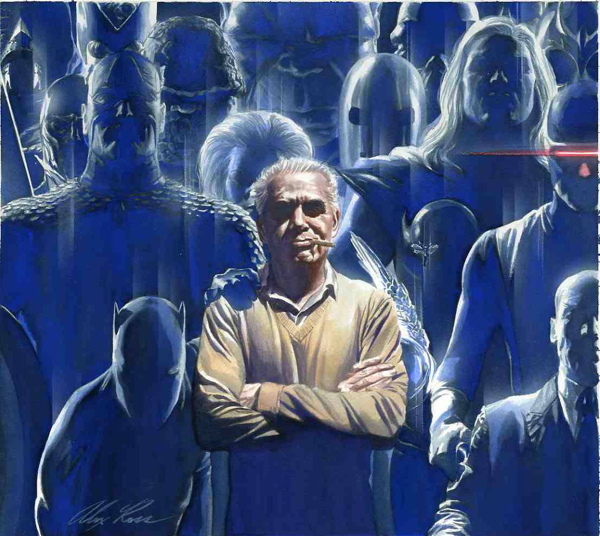
Tribute to the King by Alex Ross.
Friday’s announcement of a settlement between Jack Kirby’s heirs and Marvel seems like good news—but is it? And what does it mean?
I’m told Jeff Trexler, whose identification of the “instance and expense” aspect of the lawsuit may have helped get that into the petition to the Supremes, is writing his summary for TCJ.com, so while we all eagerly await that, here’s a little of the known knowns and known unknowns:
First off, Mark Evanier, a Kirby family confidant, a witness at various Kirby-related trials and filier of an amicus curiae brief is certainly in a position to know more of the Kirby position and this is all he had to say on the matter:
It was announced this morning that the family of Jack Kirby has settled with Marvel Comics (i.e., Disney) ending a very long dispute. The Supreme Court was only days from considering whether to take on the case and obviously, the timing of this settlement has much to do with both sides’ concern with what would get decided there.
If you’re coming to this page in search of details and commentary, you’ve come to the wrong place. I will be saying nothing about it other that I am real, real happy. And I’m sure Jack and his wife Roz, if they’re watching this from wherever they are, are real, real,real happy.
That’s either great fronting or a pretty solid indication that the Kirbys got what they were looking for. Since Evanier was intimately involved in the case, it’s probably legally all he can say. But if Mark thinks Jack is smiling, I’m smiling.
You can read all the petitions and briefs here. And you can bet a lot of people will be poring over these for a lot of reasons.
Charles Hatfield has a good round up of the ins and outs of the case itself, the many friend of the court briefs, and how the case grew in importance as more Hollywood vested interest signed on.
However, news of the cert petition reignited publicity over the case, and in May SCOTUS discussed the case in conference, after which the Court requested a response from Marvel. Then, in June, things started to happen: several important amici curiae briefs supporting the Kirbys’ petition brought high-profile attention to the case. One of these was filed on behalf of Kirby biographer Mark Evanier, Jack Kirby Collector publisher and editor John Morrow, and the PEN Center USA (a nonprofit representing diverse writers).
In addition, the California Society of Entertainment Lawyers filed a brief. Another brief that became very important for the press coverage of the case was submitted by Bruce Lehman, former Assistant Secretary of Commerce and Director of the US Patent and Trademark Office, and an authority on intellectual property law. Lehman filed in collaboration with former US register of copyrights Ralph Oman, the Artists Rights Society, and the International Intellectual Property Institute; they were joined by the American Society of Illustrators, the National Cartoonists Society, the Association of American Editorial Cartoonists, and other organizations representing arts professionals—as well as scores of cartoonists and illustrators who also signed on.
Kurt Busiek has been debunking some common myths about the case in the Beat’s own comments, but perhaps because Beat commenters are just smarter or less pig-headed than the average commenter, he saved his masterpiece in the genre for this CBR thread where he debunks from all times that the Kirby heirs were just greedy and opportunistic. (Link via Tom Spurgeon) He also speculates about the outcome, just like Iim gonna do in a few paragraphs:
Based on that, it sure doesn’t look like Marvel’s throwing the Kirbys a few bucks to go away. If that’s what they wanted to do, they could have done that any time within the last few years. Whoever blinked, it was the side that had the most to lose if the case went to the Supreme Court and risked a ruling they didn’t like.
That wasn’t the Kirbys — they were already getting nothing, so the Supreme Court deciding against them wouldn’t hurt them any.
But Disney/Marvel has billions on the line. They don’t want to risk losing that. Not even with a pro-business Supreme Court likely to rule for them. Because they’re not sure the Court would rule for them. Not with a bunch of people on the other side who make IP contracts their life — including one of the guys who helped write the 1978 Copyright Law. If that guy is saying, “No, no, it doesn’t work that way,” there’s too much of a chance that the Court will listen.
So my prediction is: All the public changes you see coming out of this are going to be favorable to the Kirbys. Probably the first thing you see will be creator credits. And the family’s going to suddenly be financially secure, like their father/grandfather wanted them to be.
What the “greedy heirs” morons don’t get is that this was a case with very important principles set off by the Copyright Law of 1976 regarding what is work for hire. As Kevin Melrose reports of a Law.com article, many issues remains undecided by the settlement, and it’s entirely possible that these will crop up again and the Supreme Court may yet hear such a case:
The Kirby heirs insisted the artist was an independent contractor who worked from home, provided his own supplies and received no benefits. However, he Second Circuit, using its frequently criticized “instance and expense” test, found that because Marvel assigned and approved projects and paid a page rate, Kirby’s contributions were indeed “for hire.”
The Kirbys took aim at the Second Circuit’s definition of work for hire in their petition to the U.S. Supreme Court, which drew support from the likes of Hollywood guilds and a former director of the U.S. Patent and Trademark Office, demonstrating the potentially far-reaching ramifications of the dispute. However, the 11th-hour settlement announcement arrived just ahead of a Supreme Court conference on Monday to determine whether to review the case — meaning the Second Circuit’s finding stands.
So the gray area surrounding work for hire before 1978 remains, although experts say given that 56-year window — or 35 years for copyrights transferred after 1979 — it’s only a matter time before another case, more likely to involve a musician/songwriter than a comics artist, makes its way to the Supreme Court, requiring the justices to weigh in.
As Kirby family attorney Marc Toberoff told Law.com, “At some point there will be another case like this.”
While it seems unlikely from the outside that SCOTUS would ever have sided with the Kirby heirs, Marvel didn’t know, and a happy smiling settlement was vastly to everyone’s benefit. And more to the point, there’s no such thing as secret in entertainment any more. As Joshua Riviera writes for EW:
One of the great things about modern pop culture isn’t just the wealth of content available, but the interest it has spurred in the creators behind it. Showrunners, once an invisible position in the broadcast era, are now at the forefront of fans’ minds when obsessing over TV. Similarly, the public perception of filmmakers has slowly evolved from the days of the monolithic studio system to accommodate directors and screenwriters and cinematographers and composers and VFX teams and crew. Comics have come a long way from the 60s, which saw Jack Kirby slowly become frustrated with the business that grew and endures to this day thanks in large part to his labors—now many comics are sold based on the strength of the people making them. But the way comics creators are credited in other media based on their work is often lacking.
Yet, things have changed a lot from the days when Marv Wolfman was barred credits of Blade, setting off a lawsuit he eventually lost and the current spate of copyright battles. Nowadays, one imagines, Marv would be saluted at the Hall H panel and trotted around to talk shows. While it’s pretty clear that you need to lawyer up to get your share of whatever pie — mini or maxi — may exist, Marvel/Disney has become more sensitive to the bad publicity of the starving creator railing against the corporation as he rolls around in his ratty sleeping bag from his stately cardboard box on the street.
And now some speculation from me. Given the fair-enough-to-shut-them-up treatment of Jim Starlin and the family of Bill Mantlo over Guardians of the Galaxy, Disney and Marvel seem to be on a better path now. You can attribute that to the bad optics of the cardboard box creator, but I’m pretty sure most of the top brass at Marvel proper, including Dan Buckley, Joe Quesada and Axel Alonso, would wish to see creators fairly treated if it were within their powers. (The same was undoubtedly true of Paul Levitz and Jenette Kahn at DC.)
Given the huge, vocal and unending respect for the work of Jack Kirby by just about every creative type involved with all these “comic book movies,” I share the Busiek viewpoint that we’ll see more public inclusion of Kirby among the “Marvel founders.” Kirby always got acknowledgement in the credits of Marvel movies, but we could see more “created by” credits. Kirby could be inducted into the “Disney Legends” hall of fame type deal. Disney doesn’t do a ton to promote its actual creative people, but I’d expect to see Kirby enshrined as much as possible.
And now, here is my Torsten-like fantasy to end this. Maybe someday at Disneyland, as the Marvel character rides and characters and churros swirl, there could be a statue of Stan and Jack as they create the Marvel Universe as we first knew it. I’m not sure Jack would have really liked that, but the victors write history, and I’m pretty sure that Jack Kirby is a victor now.

If you didn't like the Disney Company's make-believe version of Walt Disney in "Saving Mr. Banks," fret not, an independent company has now produced their own fantasy Walt biopic: Walt before Mickey.

By: Maryann Yin,
on 9/10/2014
Blog:
Galley Cat (Mediabistro)
(
Login to Add to MyJacketFlap)
JacketFlap tags:
Adaptation,
Jon Heder,
David Henrie,
Thomas Ian Nicholas,
Timothy S. Susanin,
Roy Disney,
Armando Gutierrez,
Arthur L. Bernstein,
Diane Disney Miller,
Jodie Sweetin,
Khoa Le,
Walt Disney,
Add a tag
A new trailer has been unveiled for the Walt Before Mickey movie.
This film adaptation shares the same title as Timothy S. Susanin’s 2011 nonfiction book which features a forward written by Diane Disney Miller. The video embedded above offers glimpses of Thomas Ian Nicholas as a young Walt Disney and Jon Heder as his brother Roy Disney.
Here’s more from Deadline: “Disney fans got a peek at the 1960s-era Walt in last year’s Saving Mr. Banks, but Walt Before Mickey offers up the pre-Depression Era ‘missing decade’ during which he launched four studios and moved from Missouri to California, with varying degrees of success. Jodie Sweetin (Full House) and David Henrie (Wizards Of Waverly Place) also star for first-time feature helmer Khoa Le, who directs a script by Arthur L. Bernstein and Armando Gutierrez.”
New Career Opportunities Daily: The best jobs in media.

By: Jerry Beck,
on 8/6/2014
Blog:
Cartoon Brew
(
Login to Add to MyJacketFlap)
JacketFlap tags:
Disney,
Cartoon Culture,
Walt Disney,
Mickey Mouse,
Comedy Central,
Ub Iwerks,
Oswald the Lucky Rabbit,
Derek Waters,
Drunk History,
Michael Angarano,
Tony Hale,
Add a tag
"Drunk History," the Comedy Central series in which drunk celebrities explain real history, set their inebriated sights last night on Walt Disney, Ub Iwerks, and the creation of Mickey Mouse.
It's perhaps a mixed blessing that the only public personality who talks frequently about Walt Disney nowadays is the right-wing political commentator/conspiracy theorist Glenn Beck.

By: Jerry Beck,
on 7/11/2014
Blog:
Cartoon Brew
(
Login to Add to MyJacketFlap)
JacketFlap tags:
Walt Disney,
Pinocchio,
Ward Kimball,
Michael Barrier,
Untold Tales,
Pete Young,
Ken Anderson,
Charles Philippi,
Claude Coats,
Funnyworld,
The Making of Snow White and the Seven Dwarfs,
Add a tag
Before I got hired at Disney Features, I sold a few magazine articles and developed a love of writing for print, where there was nothing between writer and reader but words on a page. When I became a Disney employee, I realized I was surrounded by animation veterans with vivid memories of the rambunctious days at the old Hyperion studio, and the creative struggles that went into making "Snow White," "Pinocchio," and the other early features. Talking to older Mouse House staffers, it dawned on me they could provide great source material for articles.

By: Jerry Beck,
on 6/25/2014
Blog:
Cartoon Brew
(
Login to Add to MyJacketFlap)
JacketFlap tags:
Woolie Reitherman,
Untold Tales,
Pete Young,
Vance Gerry,
Ben Lucien Burman,
Catfish Bend,
Don Duckwall,
Ken Anderson,
Walt Disney,
Ward Kimball,
Add a tag
I was back in Don Duckwall's office, exchanging insincere smiles with him. I had been on "The Fox and the Hound" with Larry, Woolie, and everybody else for half a year. But now Don wanted me to go on another assignment.
Believe it or not, one of the best online sources for animation history buffs is YouTube. Amazing and rare materials, often digitized from private film collections, is posted regularly on the streaming site. You just have to know where to look.

By:
Heidi MacDonald,
on 4/20/2014
Blog:
PW -The Beat
(
Login to Add to MyJacketFlap)
JacketFlap tags:
Conventions,
Cartoons,
Disney,
Walt Disney,
Life Drawing,
Wondercon,
Disney Animation,
Anaheim Wondercon,
Wondercon 2014,
master teachers,
Add a tag

Disnery Master Teachers teaching the crowd about Life Drawing
When someone thinks of the name “Disney,” many things can come to mind; Some may think of their theme parks. Some their animated films. Some may look back on fond childhood memories. And others might think of a cartoon mouse that wears pants, gloves, and shoes. But when I hear “Disney,” my first thought is that of “quality.”
Disney has been pushing the boundaries of films, animation, and attraction technologies for many decades. But the one thing that ties them all together is the detail that goes into them. Take for example the movie The Little Mermaid. Before then, animated movies still hadn’t found a spot in the mainstream of feature films. After seeing that film, no one could deny that it was something great. The animals and characters alike were so well done, just as the sceneries.
Life drawing is the practice of using a model and drawing/sketching it out. Disney has done the practice consistently for many years. They’ve been known to have models come to the studio so they can sketch them and see how they move. Even a baby elephant or two has made it to their studios for study. And what of 3D movies? John Lasseter of Pixar and Disney Animation used a small camera to understand how things looked from a small perspective in his second Pixar feature A Bug’s Life. With this, he was able to have artists do preliminary drawings to later get the three dimensional effects to look realistic.
The current masters of Disney teachers pass on the importance of the practice to the next generation of Disney designers and animators. The four that showed for the panel today held at beautiful WonderCon Anaheim were Bob Kato, Karl Gnass, Mark McDonnell, and Dan Cooper, moderated by Fast Company’s Susan Karlin. Each of these artists have been doing what they do for a number of years, and have a number of books published on the practice of life drawing.
After a brief hiccup where an audience member (who in my personal opinion was celebrating 4/20 in hard fashion) kept interrupting to say how much he respected these men, Susan Karlin led the collective through their thoughts on the subject of life drawing. Karl Gnass explained that, “Life drawing is based understanding. When a show is over, that is your resource to go back to.” Bob Kato added, “Drawing is a language. A show may need a certain style, and you need to be able to speak it.”
The panel then further went into that life drawing allows the artist to understand how someone can move, can bend, how it ultimately works. Art ultimately references real life in its core. “If you’re designing without a foundation, you’re designing a lie from a lie; Something from an abstract idea. And the further you get from the truth, the more it gets distorted. Like the telephone game.”
Whether you draw, design, or whatever, you have to put the time into understanding what you are doing and how you want to convey that. “There are no shortcuts,” says the panel almost in unison. “There needs to be skill, life in it. You have to have an understanding of the infrastructure.”
Ultimately what it comes down to is that no matter if you’re going to be a 2D artist or a 3D one, life drawing helps to teach one how to give their creation life and emotion. Having this particular skill in your artistic toolbox will keep your work real.
~Nicholas Eskey

By:
Heidi MacDonald,
on 4/19/2014
Blog:
PW -The Beat
(
Login to Add to MyJacketFlap)
JacketFlap tags:
Conventions,
Walt Disney,
panels,
panel,
WonderCon,
Frozen,
Top News,
Disney Animation,
Walt Disney Animation Studios,
Add a tag
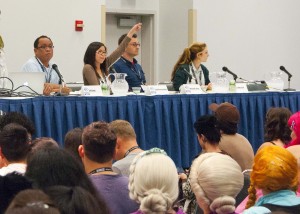 If you’re a warm blooded human and have been out in public, then you’ve most likely heard that wildly popular and award winning song from the movie Frozen. Yeah, you know the one I’m talking about. The one that has gotten so far wedged into your head that brain trauma is the only remedy. Well don’t worry. This article isn’t about that song.
If you’re a warm blooded human and have been out in public, then you’ve most likely heard that wildly popular and award winning song from the movie Frozen. Yeah, you know the one I’m talking about. The one that has gotten so far wedged into your head that brain trauma is the only remedy. Well don’t worry. This article isn’t about that song.
No one can deny that Frozen hasn’t been a homerun for Walt Disney Animation. It has won the first Oscar award for an animated movie for the 91 year old Disney Animation Studios, and reports are claiming that it’s the highest grossing animated picture for the company, ever! A lot of time, planning and work went into this sweep of a film. But aside from the producers, the voice actors, and the animators, there are those that worked well behind the scenes who made the movie the hit it has become: The story artists.
This year at Wondercon Anaheim we were joined by four story artists who worked on Frozen: Jeff Rango, Fawn Veerasunthorn, Nicole Mitchell, and Normand Lemay. Each of them shared what they felt what the term “story” meant for them. Jeff Rango, whose first work with Disney after his three years at Cal Arts was designing the Titans for a little animated film named Hercules, shared that for him, “Story is the architecture of a movie. And [that] the story artist is the architect.”
Jeff is also the man who worked on making the scenes match up well with the movie’s music. “The songs are pretty much done before we start [working] with the scenes. I listen to the songs and try to design the scenes around them.” Jeff worked closely with the music and lyrics composers, Kristen Anderson-Lopez and Robert Lopez, during much of the process. Since the pair lives on the East coast however, Jeff had to do it all over the web. And because he really didn’t live near the animation offices, he had to get there early to make up for the three hour time difference. But he made it work. “Since my drive was an hour and a half both ways, it let me listen to the music probably over a thousand times. It allowed me to get a feel for it.”
Fawn Veerasunthorn, Thailand born and having worked with Disney since 2011, shared that she felt the story process was broken up into two parts. The first of which is more or less pitching ideas, communicating and elaborating with others verbally, and also a little bit of “worrying” too. The ideas that make it through then are then put to a storyboard and sketched out. “With the scene that included Elsa and Anna after the coronation, we originally had it that Hans wasn’t going to be there. But as we sketched it out, we felt that Anna was just talking about her invisible boyfriend. There wasn’t enough Hans.” With the sketches, the story team was also able to focus on some repeating symbolisms. Over and over in the movie we see the gloves (protection/security) and doors (fear/hiding). They were able to decide where these symbols were most effective for each particular scene.
Before any of the scenes are animated, the general ideas have to be discussed and finalized. To get a better idea of what would work for the animation, the artists create what are called “screenings.” They’re basically the proposed scenes drawn out in pencil and animated like a slow flip book. Potential dialogue is also given to each of these hand drawn scenes. “Screenings help put into perspective what will and will not work for the story,” says Normand Lemay. Normand, the Canadian born story artist, has worked for Disney Animation for four years, with Frozen being his first credited work.
What about the snowman do you ask? Where did he come from? Well, you have Jeff Rango to really thank for that. Seen as the more comedic one of the team, he helped to design and name that silly but brainless pile of snow called “Olaf.” “I’ve lived in San Diego, and in [Ocean Beach] there use to be ‘Big Olaf’s Ice Cream.’ I pushed for that guy to be named Olaf.” Jeff also helped much with Olaf’s comedic singing scene, which personally was my favorite singing scene. Guilty pleasure you can call it. But that cute and funny snowman almost ended up on the cutting room floor if it weren’t for one scene that helped solidify his importance. “We decided that it should be Olaf who helped Anna realize that Kristoff might be her real true love and answer,” says Nicole Mitchell. She’s worked with Disney Animation for the last six years, first entering through the trainee program. “That she was loved. It helped Olaf to become a [real] piece of the movie.”
There’s a lot of work that goes into an animated feature. A lot of it is what you see in the final product on the big screen. But like any house, it should be build on a strong foundation. Next time you sit down in a theatre, or flip on your favorite animated movie, don’t forget to thank those who helped form the supporting beams that hold the entire thing up, and allowed it to become something great.
~Nicholas Eskey

By: Jerry Beck,
on 8/7/2013
Blog:
Cartoon Brew
(
Login to Add to MyJacketFlap)
JacketFlap tags:
Disney,
Walt Disney,
Roald Dahl,
Frank Thomas,
Ward Kimball,
Hal Adelquist,
Betty Kimball,
Art Elliot,
James Bodrero,
Jose Oliveira,
Larry Lansburgh,
Lillian Disney,
Retta Scott,
Roy Williams,
Three Caballeros,
Tiger West,
Add a tag

This series of never-before-published photos was taken at the 1945 wrap party for Walt Disney’s Latin American-themed package feature The Three Caballeros. In addition to photos of Walt and Lillian Disney, there are images of some of Disney’s top artists including Mary Blair, Fred Moore, Ward Kimball, Retta Scott, and James Bodrero. Jose Carioca’s voice, José Oliveira, is in one of the images, and soon-to-become children’s book author Roald Dahl (Charlie and the Chocolate Factory, Matilda) is seen in another. Also pictured is the studio’s well-liked head of personnel, Hal Adelquist, who later ended up panhandling in the Bowery.














Here’s the trailer for Saving Mr. Banks, the fictionalized Disney-produced account of the relationship between Walt Disney and Mary Poppins creator P.L. Travers. The film, which stars Tom Hanks as Disney and Emma Thompson as Travers, is scheduled for release on December 13. It’s unclear what the studio is attempting to achieve by making this film, but if the cornball trailer is any indication, it’s unlikely to make a dent in addressing the studio’s Walt Disney image problem.

By: Jerry Beck,
on 5/14/2013
Blog:
Cartoon Brew
(
Login to Add to MyJacketFlap)
JacketFlap tags:
Disney,
Ideas/Commentary,
Walt Disney,
Hitler,
NY Times,
WS,
Paul McCarthy,
Tom Eccles,
White Snow,
Add a tag
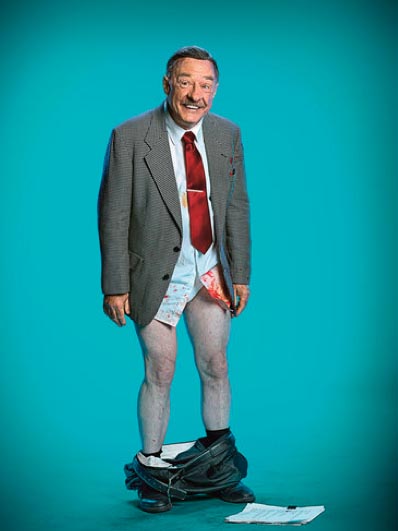
In last weekend’s NY Times Sunday Magazine, the paper published a profile of artist Paul McCarthy in connection with his new show WS (which stands for “White Snow”). The epic performance piece, which opens June 19 at Manhattan’s Park Avenue Armory, will consist of “a massive, fantastical forest with towering trees, two off-scale houses, equipment and props from classic film-sets, and layers of film and sound.” During the piece, McCarthy—as Walt Disney—will participate in an orgy with Snow White and the seven dwarfs.
All that is well and good, but what alarmed me about the piece is why Times writer Randy Kennedy compared McCarthy’s portrayal of Disney to Hitler in the article’s second paragraph:
The transformation was startling not only because McCarthy, 67, had succeeded in making himself look quite a bit like Walt Disney, but also because his version of Walt smacked — obviously but also hilariously — of Hitler.
It’s hard to believe that the editors at the NY Times are naive about the implications of comparing any individual to Hitler, much less an important historical figure who is commonly—and falsely—portrayed as an anti-Semite in popular culture. It’s irresponsible at best, malicious at worst.
Kennedy says in his piece that McCarthy’s Walt “obviously” channels Hitler, but in the Times photo of McCarthy, the association is far from obvious. So how did Kennedy come up with such a far-fetched observation?
Perhaps the answer lies with one of the people interviewed for tge piece: curator and former New York City Public Art Fund director Tom Eccles, who is helping organize McCarthy’s show. In an interview with another media outlet, Eccles also described McCarthy’s Walt to Hitler, calling the show a “gory, horrifying tale of Paul McCarthy as Disney, as Hitler, in love with Snow White.”
What I’d like to know is whether McCarthy himself endorses this comparison of Walt Disney to Hitler or is this something concocted by his handlers? McCarthy’s commentaries on contemporary media and pop mythology tend to be layered and thought-provoking, and I’d be surprised if he was personally promoting such simplistic, banal allusions. Whatever McCarthy’s views, it’s clear that a lot of people want to encourage this revisionist portrait of Walt Disney as monster, including, sadly, the NY Times.

By: Jerry Beck,
on 5/2/2013
Blog:
Cartoon Brew
(
Login to Add to MyJacketFlap)
JacketFlap tags:
Disney,
Animators,
Walt Disney,
Mickey Mouse,
Alfred Hitchcock,
Ub Iwerks,
The Birds,
Iwerks Studio,
Plane Crazy,
The Skeleton Dance,
Add a tag
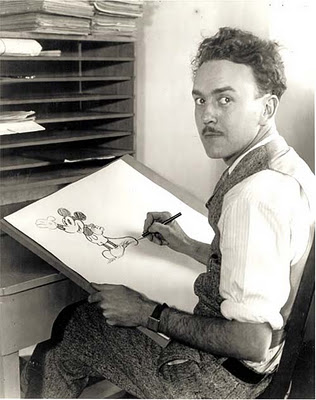
Most animation fans know that Ub Iwerks co-created Mickey Mouse. But he contributed a lot more to animation than people think.
1. Ub Iwerks was a workhorse
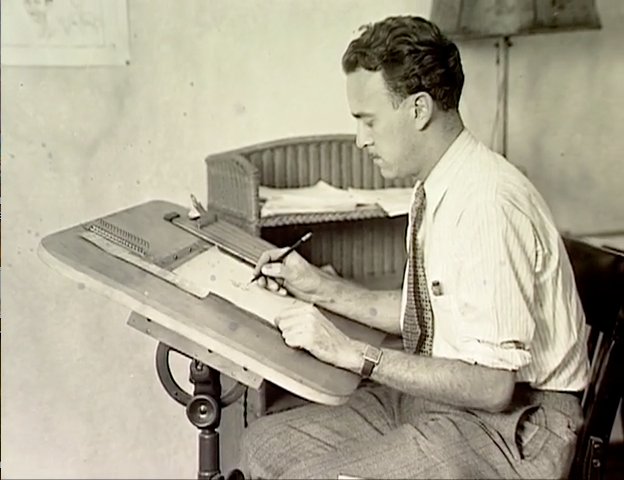
While the rest of Disney’s studio was toiling away on the last few “Oswald the Lucky Rabbit” shorts that they were contractually obligated to finish for Universal, Ub animated the first Mickey Mouse cartoon, Plane Crazy, alone and in complete secrecy. During work hours, Ub would place dummy drawings of Oswald on top of his Mickey drawings so nobody would know what he was doing. At night, Ub would stay late and animate on Mickey. He animated the entire six-minute short singlehandedly in just a few weeks, reportedly averaging between 600-700 drawings a night, an astounding feat that hasn’t been matched since. When the success of Mickey Mouse propelled the Disney studio to new heights, Ub continued his efficient streak by animating extensive footage on Silly Symphonies shorts like The Skeleton Dance and Hell’s Bells.
2. Ub Iwerks was a mechanical marvel
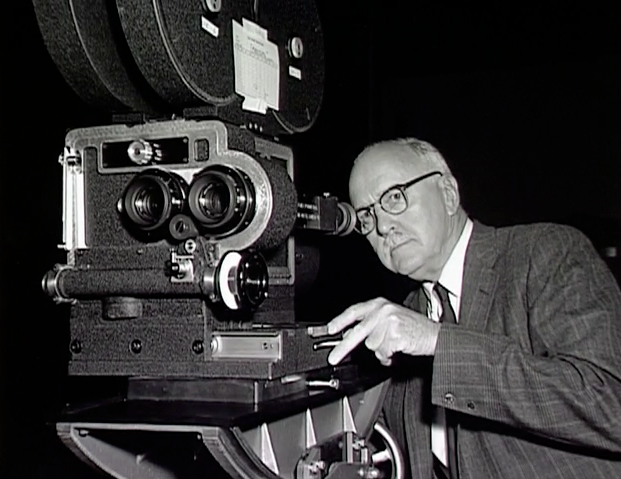
When not animating with a pencil, Ub loved to build and create inventions. He was intrigued by the inner workings and mechanics of machines, and loved to delve into what made things work. Supposedly he once dismantled his car and reassembled it over the course of a weekend. With this mechanical knowhow, Ub invented devices that incorporated new techniques into his cartoons. After Iwerks opened the Iwerks Studio in 1930, he heard that Disney was attempting to develop what later became the multiplane camera. Ub one-upped his old partner and made his own version from car parts and scrap metal, and incorporated the multilane technique into his cartoons, like The Valiant Tailor:
3. Ub Iwerks was a jack of all trades, and a master of every one
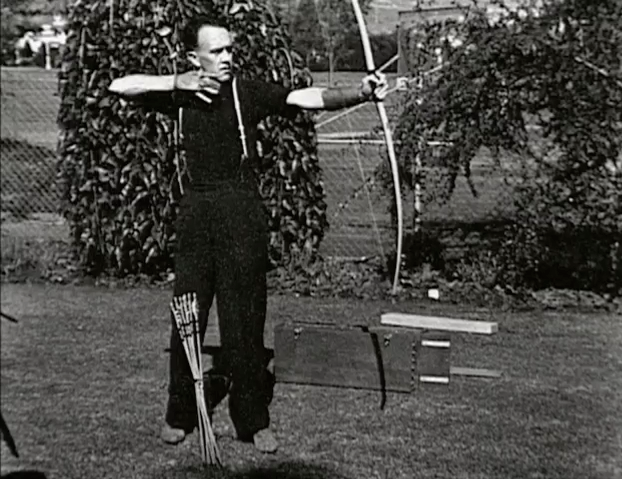
Besides being a skilled animator, mechanic and machinist, Ub constantly expanded his creative and intellectual pursuits through hobbies and sports. Being the ultimate challenge-seeker, he excelled at every single thing he attempted. And when he felt that he had mastered something and it was no longer a challenge to him, he’d quit. When Ub bowled a perfect 300 game, he put his bowling ball in the closet and never bowled again. When he took up archery, he became such a skilled archer that he got bored of getting bulls-eyes and quit that too. Even as an animator, Ub felt he perfected his craft and after his studio closed in the mid-1930s, he never animated again.
4. Ub Iwerks created movie magic
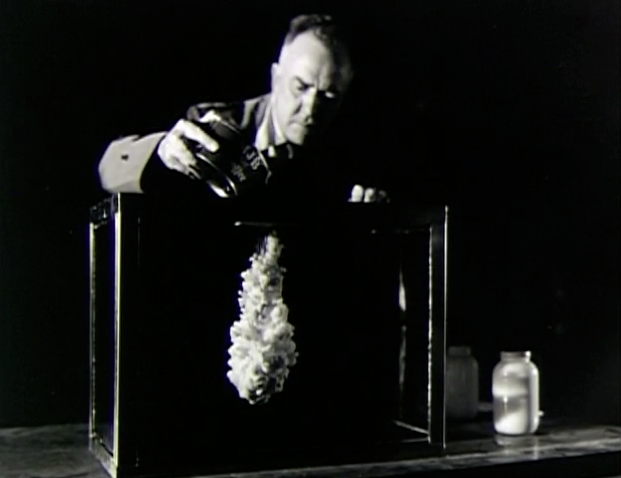
When Ub rejoined the Disney studio in 1940, Walt Disney gave his old partner free reign to do as he wished. With Disney’s resources, Ub developed special effects techniques for animation, live-action films and Disney’s theme parks, much of which is still in use today. He helped develop the sodium vapor process for live-action/animation combination and traveling mattes, which he won an Oscar for in 1965 after utilizing it in Mary Poppins. He adapted the Xerox process for animation, which eliminated the tedious task of hand inking every cel. For Disneyland, Ub designed and developed concepts for many of the park’s attractions, including the illusions in The Haunted Mansion and the animatronics for attractions like Great Moments with Mr. Lincoln and Pirates of the Caribbean. Disney even loaned him out to Alfred Hitchcock to help with the effects needed to create flocks of attacking birds in The Birds.
5. Ub Iwerks made animation what it is today
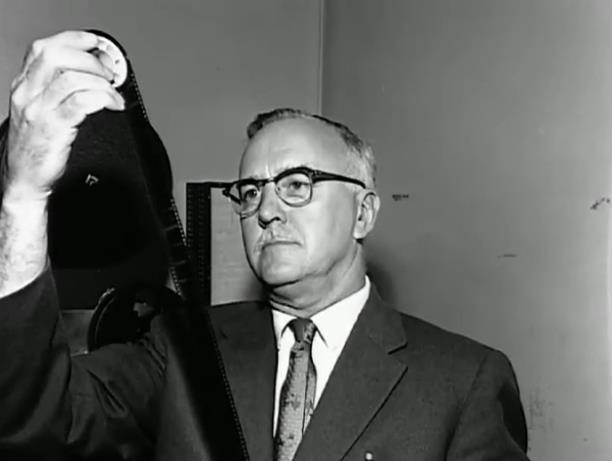
If Winsor McCay laid he foundation for character animation, then Ub Iwerks built a castle on top of it. He took the didactic rigidness of what animation was in his era and made it loose, organic, appealing and fun. Building upon what Otto Messmer did before him with Felix the Cat, the characters Ub animated were packed with personality. Characters like Oswald the Lucky Rabbit and Mickey Mouse were creations that audiences could relate to as no characters before. They thought, breathed, emoted and were infused with life.
What Iwerks designed and animated in shorts like Steamboat Willie and Skeleton Dance contained the principles (squash and stretch, appeal, anticipation, etc.) that became the genesis of the “Disney style”, which animators like Fred Moore and Milt Kahl later fleshed out. His work reached out and influenced animators all over the world, and they took the ball and ran with it. Rudolph Ising and Hugh Harman, who worked under Ub at Disney, brought his sensibilities to Warner Bros. and developed the Merrie Melodies and Looney Tunes series. Many animators got their start at Ub’s studio in the early 30′s, including UPA co-founder Steve Bosustow and Warner Bros. director Chuck Jones. Manga and anime pioneer Osama Tezuka was also greatly influenced and inspired by Ub’s work.
To learn more about Iwerks’ life and work, read the biography The Hand Behind the Mouse .
.

Fictionalized accounts of Walt Disney’s life are all the rage this season, so much so that even the Walt Disney Company is inventing random stories about its founder that are loosely based in fact.
On Monday, the Soho Rep in Manhattan will open a new play written by Lucas Hnath called “A Public Reading of an Unproduced Screenplay About the Death of Walt Disney.” I haven’t found any reviews of the play, but the Wall Street Journal wrote that it “begins with a friendly greeting, but as [Disney] becomes ever more obsessed with his control of the narrative, he becomes less open with the audience, less appealing. He’s striving to dominate the truth.”
Character actor Larry Pine (House of Cards, Moonrise Kingdom, Oz) plays the role of Disney. It runs through May 26. The official show description:
Tonight Walt is going to read you a screenplay he wrote. It’s about his last days on earth. It’s about a city he’s going to build that’s going to change the world. And it’s about his brother. It’s about everyone who loves him so much, and it’s about how sad they’re going to be when he’s gone.
Right? I mean, how can they live without him? How can anyone live without him?
Artistic Director Sarah Benson directs the world premiere of Lucas Hnath’s adrenaline-charged odyssey, a supersonic portrait of the man who forever changed the American Dream.
Set Design by Mimi Lien, Costume Design by Kaye Voyce, Lighting Design by Matt Frey, Sound Design by Matt Tierney, Props by Jon Knust, Choreography by Annie-B Parson, Special Effects by Steve Cuiffo, Production Stage Manager: Heather Arnson, Production Manager: BD White.
Featuring Larry Pine as Walt Disney, Amanda Quaid as Daughter, Brian Sgambati as Ron and Frank Wood as Roy.
View Next 25 Posts



 This year marks the 25th anniversary of The True Story of the Three Little Pigs. Viking Children’s Books, an imprint of Penguin Young Readers Group, first published this book back in October 1989.
This year marks the 25th anniversary of The True Story of the Three Little Pigs. Viking Children’s Books, an imprint of Penguin Young Readers Group, first published this book back in October 1989.


























“While it seems unlikely from the outside that SCOTUS would ever have sided with the Kirby heirs, Marvel didn’t know, and a happy smiling settlement was vastly to everyone’s benefit”
When you have an uncertain outcome and a large amount of money on the line, it becomes a game of probabilities. Let’s say Disney stood to lose $500 million if it lost this suit (I made up this number out of thin air). And let’s say they calculated that they had an 80% chance of winning the case before the Supreme court. To calculate the cost of the lawsuit to them before taking it to court, they would multiply the 80% x $0 for the Kirbys and add 20% x $500 million for the Kirbys. The expected loss would be $100 million. Given this, any settlement they could make less than $100 million is worth taking. Obviously Disney’s calculus was more complex, and I have no idea how much they calculated they would lose in a worst case scenario. But I would not be at all surprised if some company risk managers did a similar valuation using probabilities to come up with an acceptable settlement price.
The other aspect is just the bad publicity the case would bring if it was heard by the supreme court. “Could court case prevent Avengers 2 and 3?” would be attention getting headlines. Even if 95% of the people don’t care, the 5% that does and stops buying the Marvel Brand (Movie tickets, DVDs, Video Games, Merchandising, etc..) adds up, especially over time across multiple products. Marvel has something Pixar like special going on with their brand in the mainstream marketplace and I don’t think they want to tarnish it. So just going to the supreme court would cost them money, possibly lots. Losing would have cost them a whole lot more. Having this go to court was a lose or LOSE situation. The settlement was the better option.
It’s not only Starlin and Mantlo, Marvel has apparently been recently making deals with practically all creators whose characters have appeared in movies, from Kev Hopgood (for War Machine) to Steve Gan (for Star-Lord).
The news that Marvel had reached an agreement with the Kirby Estate as well came as a pleasant surprise (I hadn’t been expecting it at all), but it makes sense given the context and can now be seen as part of a larger and smarter long-term strategy.
“Marvel has apparently been recently making deals with practically all creators whose characters have appeared in movies, from Kev Hopgood (for War Machine) to Steve Gan (for Star-Lord).”
That is great news.
Mike
Better late than never, but it’s amazing that Disney didn’t invite the Kirbys in for a meeting the day that they announced that they bought Marvel. Very happy for the Kirby family and for what this will hopefully mean to future mainstream comics creators.
“Better late than never, but it’s amazing that Disney didn’t invite the Kirbys in for a meeting the day that they announced that they bought Marvel. ”
I’m quite sure no one at Disney even knew they EXISTED then. And even now, few people besides the lawyers working on the case must know that.
I remember the press conference they did that day (there was – and must still be – a sound file of it available on the web). There was exactly ONE question about the comics – and the standard, noncompromising answer they gave shows that they had no idea of what they were talking about.
I suspect Disney lawyers had to do a lot of digging through four(?) different corporate owners’ paperwork (if it exists) to figure out what Kirby had signed, as well as all of the other creators working for Marvel. Disney really could sponsor a law school, just like they sponsored CalArts. They are masters of copyright and trademark law.
They had to straddle the Copyright Act of 1976. What existed (or didn’t) before then? After? How much of Marvel’s IP was in jeopardy? So yeah, I’m sure they’re working backwards with creators to shore up any legal questions. This is the biggest. (Stan Lee settled a few years ago.)
DC dealt with this early, amid the bad publicity for the Superman movie. They give credit readily, they pay royalties, Go read Stephen Bissette’s facebook feed… he is like Busiek, but more passionate. Marvel… doesn’t credit anyone in the books, Claremont received very little for “Days of Future Past”. Will this change? Perhaps.
As for the future of lawsuits… My money is on the musicians. Warners just made a huge deal with Prince over his catalog… he owns the rights to everything now, and Warners gets an exclusive deal with Prince. 1978 + 35 years… Van Halen, Billy Joel, Dire Straights…
http://www.nytimes.com/2011/08/16/arts/music/springsteen-and-others-soon-eligible-to-recover-song-rights.html?pagewanted=all&_r=0
That will be a stronger case. Music fans follow the musicians, not the labels. Plus the record labels have made Billions on music sales (both recorded and in print).
As for the the fantasy…
Nope, not in Disneyland… no room. (Unless they bury the Toy Story parking lot and build on that land east of the convention center.)
Walt Disney World… yes, there are a few bits of real estate still left in Reedy Creek. (Most of it is swamp land, and slated for conservation.) Once the Universal license expires, or is purchased, or whatever, then you’ll see a Marvel Universe theme park, probably east of the speedway on World Drive (with a new monorail stop). Statues? Nah… unlikely. Maybe some “hidden Mickey” artwork with Stan and Jack creating the Marvel Universe.
But, yes, within five years, Disney will induct (induckt?) a large class of Marvel Legends, probably for the D23 expo in 2015.
There’s a statue of Walt Disney at Disneyland because he OWNED the company, its characters and its films. (Never mind that Ub Iwerks had as much to do with creating Mickey Mouse as Disney, if not more. It seems Disney came up with the basic idea for a cartoon mouse, and Iwerks did the “grunt” work of drawing and animating the early films, and giving Mickey a personality.)
Stan and Jack never owned Marvel or its characters. So don’t expect statues of them.
Its possible at least one top Disney exec was familiar with Kirby: CEO Bob Iger is the nephew of Jerry Iger, one of Kirby’s first employers. This may have given him the insight needed for Disney to pursue their current course of settling things with creators.